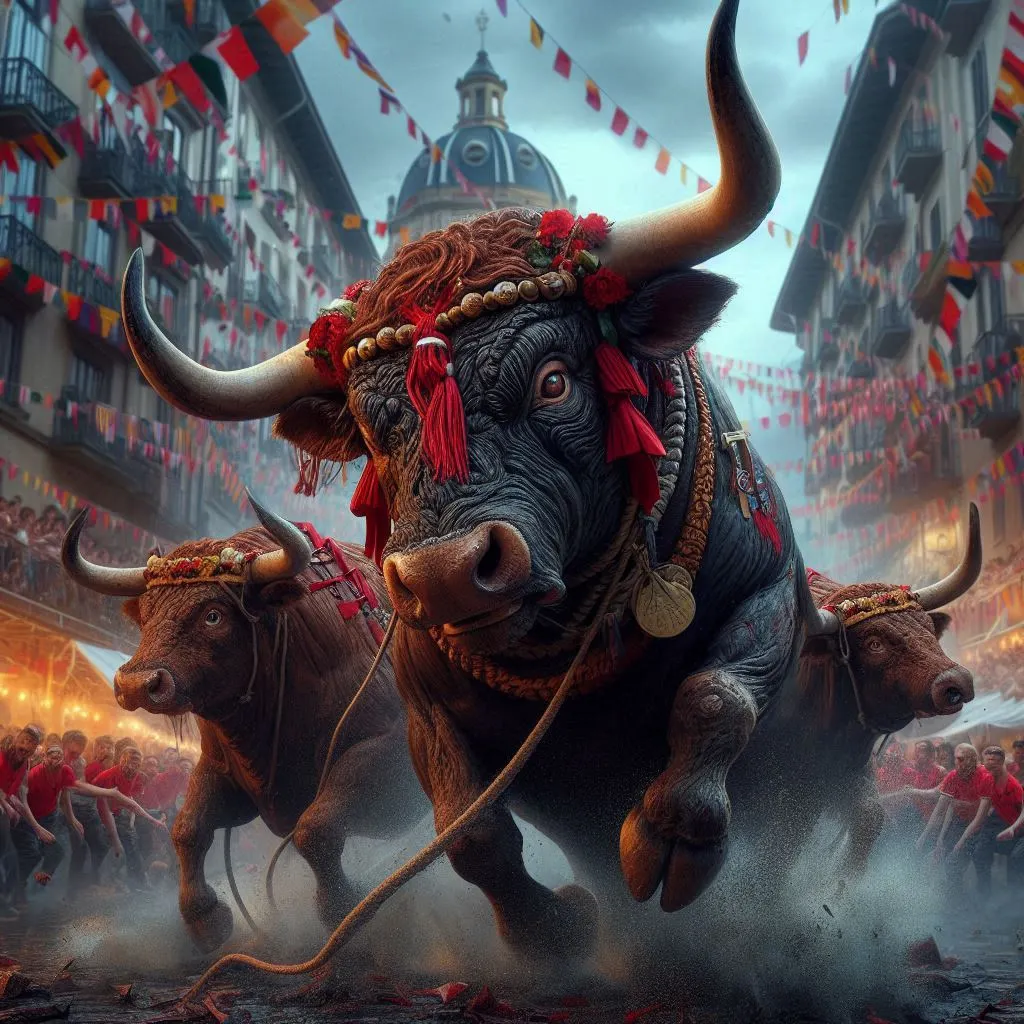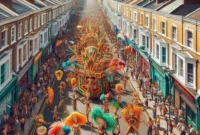
The Running of the Bulls in Pamplona, Spain, is an event that invokes intense passion, excitement, and controversy. Every July, this ancient tradition draws thousands of thrill-seekers and spectators from around the world, all eager to witness or participate in the exhilarating yet perilous dash through the narrow streets of Pamplona. But behind the adrenaline rush lies a complex tapestry of cultural significance, historical roots, and ethical debates.
A Heart-Pounding Tradition
The Running of the Bulls, known as Encierro in Spanish, is the centerpiece of the San Fermín festival, held annually from July 6 to 14. The origins of this event date back to the 14th century, rooted in the practical necessity of herding bulls from the fields to the bullring. Over time, the event evolved into a spectacle, with participants daring each other to run in front of the bulls.
The run itself covers a 0.5-mile (approximately 800 meters) stretch from the corral in Calle Santo Domingo to the bullring. Each morning at 8 a.m., six fighting bulls and six steers are released, and hundreds of runners, dressed in traditional white clothing with red scarves, race ahead of them. The atmosphere is electrifying, a heady mix of fear, excitement, and camaraderie among runners and onlookers alike.

The Allure of Danger
The undeniable allure of the Running of the Bulls lies in its inherent danger. The unpredictability of the bulls, combined with the confined space of Pamplona’s streets, creates a genuine risk of injury or even death. Since records began in 1910, 16 people have died, with many more injured each year.
For many participants, the event is a test of courage and a unique adrenaline rush that is hard to replicate. The sense of accomplishment and the shared experience among runners can be profoundly exhilarating. For spectators, the spectacle is mesmerizing, a thrilling display of bravery and chaos that epitomizes the spirit of San Fermín.

Cultural and Historical Significance
Beyond the thrill, the Running of the Bulls holds deep cultural significance for the people of Pamplona and Spain. The event is part of a broader celebration in honor of Saint Fermin, the patron saint of Navarra. The festival includes traditional music, dancing, parades, and religious ceremonies, fostering a sense of community and cultural identity.
The history of the San Fermín festival and the Running of the Bulls is rich and multifaceted. It reflects the evolution of Spanish culture, blending religious devotion with regional traditions and modern tourism. The event has also been immortalized in literature, most notably by Ernest Hemingway in his novel *The Sun Also Rises*, which brought international fame to the festival.
The Ethical Debate
Despite its cultural importance, the Running of the Bulls is not without controversy. Animal rights activists have long criticized the event for the treatment of the bulls, which are often subjected to stress, injury, and ultimately, death in the bullring. Organizations like PETA and AnimaNaturalis campaign against the festival, calling for an end to what they see as a cruel and outdated practice.
Supporters of the event argue that it is an integral part of Spanish heritage and that the bulls are treated with respect according to tradition. They emphasize the economic benefits of the festival, which brings significant tourism revenue to Pamplona and helps preserve local customs.
Balancing Tradition and Modern Values
The future of the Running of the Bulls is uncertain as Spain grapples with balancing tradition and modern values. In recent years, there have been increasing calls for reform or abolition, reflecting changing societal attitudes towards animal welfare. Some towns have already taken steps to ban or modify bull-related events, while others continue to uphold them as vital cultural expressions.
For now, the Running of the Bulls remains a potent symbol of Spanish culture, a dramatic and divisive spectacle that captivates the world each July. Whether viewed as a thrilling adventure, a cherished tradition, or a controversial practice, the event undeniably leaves a lasting impression on all who encounter it.
The Running of the Bulls is a fascinating blend of history, culture, excitement, and ethical dilemmas. It challenges participants and observers alike to consider the complexities of tradition and the responsibilities of modern society. As the debate continues, one thing is clear: the Running of the Bulls will forever be a powerful and polarizing fixture in the tapestry of Spanish life.
Read more: Celebrating Portugal Day: Honoring Luís de Camões and Portuguese Cultural Heritage




2 comments